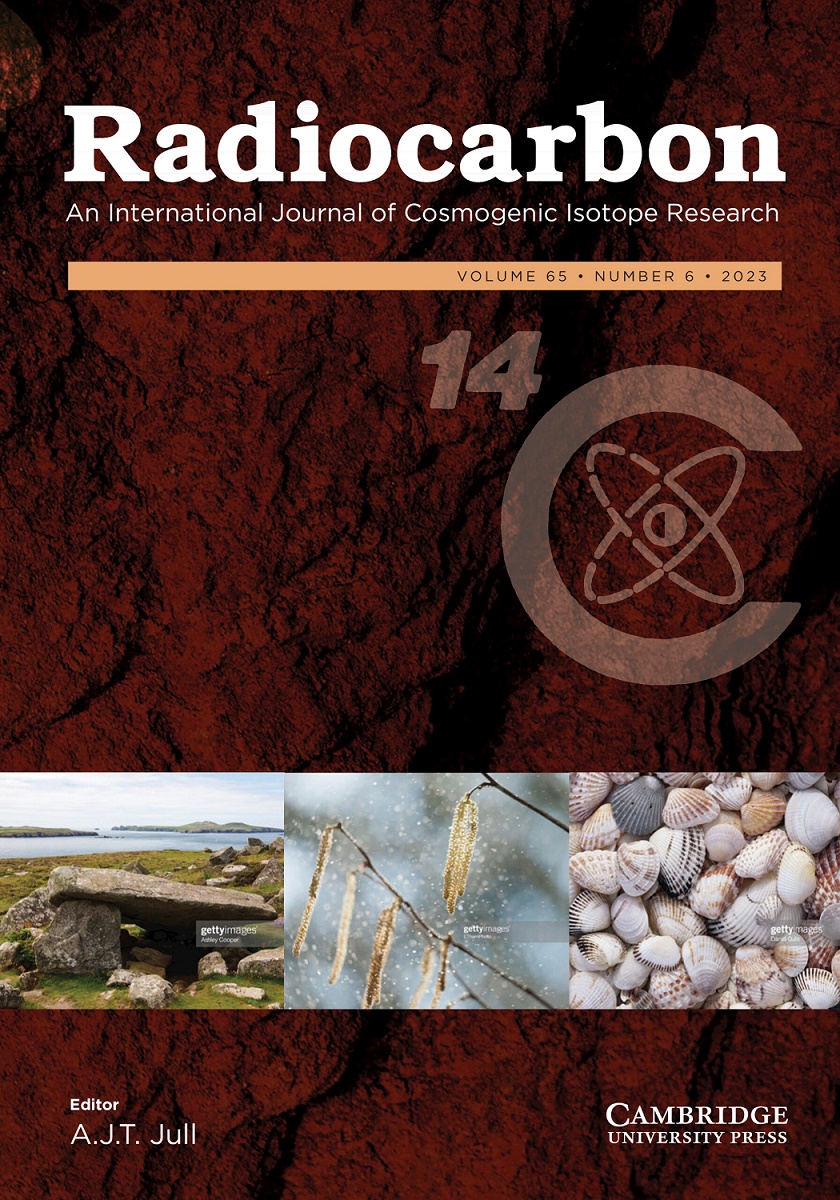利用特定复合类放射性碳分析法(CCSRA)对印度加尔各答的大气和沉积帕赫斯进行来源分配
IF 1.3
3区 地球科学
Q2 GEOCHEMISTRY & GEOPHYSICS
引用次数: 0
摘要
多环芳烃(PAHs)是有机物燃烧时产生的主要空气污染物,确定其污染源极为重要。本研究对印度第三大城市加尔各答(人口约 1600 万)的运河沉积物和空气样本中的 PAHs 进行了分子指纹识别和特定化合物类别放射性碳年代测定(CCSRA)。空气样本中的多环芳烃(Σ12-parent PAHs)平均浓度在夏季为 65.1 ng m-3,冬季为 70.9 ng m-3,运河沉积物中的多环芳烃平均浓度为 32.7 µg g-1,属于 "极高级 "污染。使用甲基多环芳烃/多环芳烃(MPAHs/PAHs)比率和分子量为 178、202、228 和 276 的异构体对比率进行分子指纹分析表明,木材和煤炭燃烧是沉积物中多环芳烃的主要来源,除此之外,大气中的多环芳烃还受到石油燃烧的影响。沉积物中 PAHs 的当代碳组分(ƒC)(0.056-0.100)以及极低的 MPAHs/PAHs 比值结果导致人们得出结论,运河中高浓度 PAHs 的主要来源是燃煤。另一方面,大气中 PAHs 的 ƒC 值(0.272-0.369)接近于 2011 年印度国内燃料消费中生物质燃料所占的比例(约 35%)。此外,在同一城市环境中观察到的大气多环芳烃与沉积物多环芳烃之间的 ƒC 差异,有助于深入了解多环芳烃对加尔各答运河沉积物的负载途径。本文章由计算机程序翻译,如有差异,请以英文原文为准。
SOURCE APPORTIONMENT OF ATMOSPHERIC AND SEDIMENTARY PAHS FROM KOLKATA, INDIA USING COMPOUND-CLASS-SPECIFIC RADIOCARBON ANALYSIS (CCSRA)
Polycyclic aromatic hydrocarbons (PAHs) are major air pollutants that are ubiquitously produced by the combustion of organic materials, and it is extremely important to identify their pollution sources. In this study, molecular fingerprinting and compound class-specific radiocarbon dating (CCSRA) were performed on PAHs from canal sediments and air samples collected in Kolkata, India’s third largest city (population approximately 16 million), where PAHs pollution has been a serious problem. Average PAH (Σ12-parent PAHs) concentrations in air samples were 65.1 ng m–3 in summer and 70.9 ng m–3 in winter and in canal sediments were 32.7 µg g–1 , which are classified as “very high-level” pollution. Molecular fingerprinting using methyl-PAH/PAH (MPAHs/PAHs) ratios and isomer pair ratios with molecular weights of 178, 202, 228, and 276 suggested that wood and coal combustion were the dominant sources of PAHs in the sediment, and that atmospheric PAHs were influenced by oil combustion in addition to them. The fraction of contemporary carbon (ƒC) of sedimentary PAHs (0.056–0.100), together with the extremely low MPAHs/PAHs ratio results, lead to the conclusion that the major source of the high concentration of PAHs in the canals is from coal combustion. On the other hand, the ƒC of atmospheric PAHs (0.272–0.369) was close to the share of biomass fuels in India’s domestic fuel consumption in 2011 (about 35%). Furthermore, the observed ƒC-discrepancy between atmospheric and sedimentary PAHs in the same urban environment was interpreted to give an insight into the loading pathway of PAHs to canal sediments in Kolkata.
求助全文
通过发布文献求助,成功后即可免费获取论文全文。
去求助
来源期刊

Radiocarbon
地学-地球化学与地球物理
CiteScore
16.20
自引率
6.00%
发文量
85
审稿时长
6-12 weeks
期刊介绍:
Radiocarbon serves as the leading international journal for technical and interpretive articles, date lists, and advancements in 14C and other radioisotopes relevant to archaeological, geophysical, oceanographic, and related dating methods. Established in 1959, it has published numerous seminal works and hosts the triennial International Radiocarbon Conference proceedings. The journal also features occasional special issues. Submissions encompass regular articles such as research reports, technical descriptions, and date lists, along with comments, letters to the editor, book reviews, and laboratory lists.
 求助内容:
求助内容: 应助结果提醒方式:
应助结果提醒方式:


